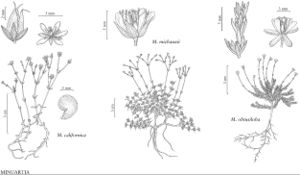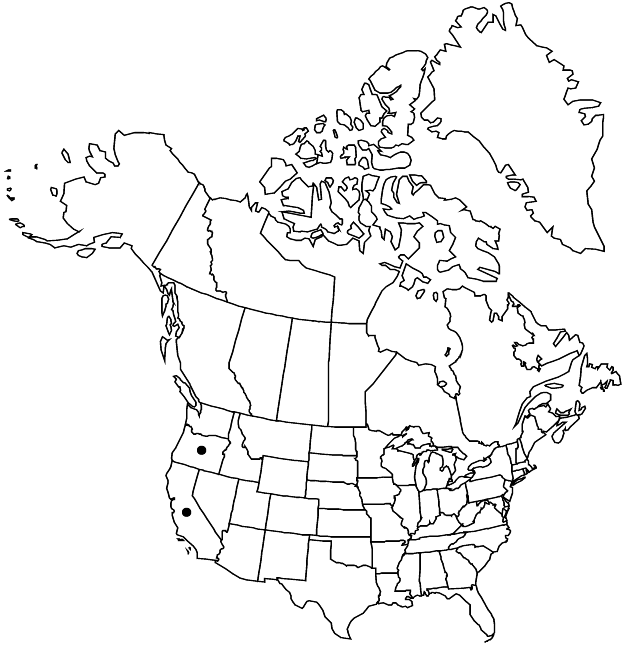Minuartia californica
Bot. Jahrb. Syst. 57(Beibl. 126): 28. 1921.
Plants annual. Taproots filiform. Stems widely spreading to erect, green, (1–)2–12 cm, glabrous, internodes of flowering stems 5–10 times as long as leaves. Leaves not overlapping, all evenly spaced, connate proximally, with loose, herbaceous or scarious sheath 0.5–0.7 mm; blade widely spreading, green, concave proximally, flat distally, weakly 1-veined abaxially, linear to awl-shaped or narrowly oblong, 2–5 × 0.2–1.5 mm, flexuous, margins not thickened, scarious proximally, smooth, apex green or purple, acute to often rounded, flat, dull to shiny, glabrous; axillary leaves absent. Inflorescences 5–7(–9)-flowered, open cymes, or rarely flowers solitary; bracts subulate, herbaceous, often scarious-margined proximally. Pedicels 0.2–1.5 cm, glabrous. Flowers: hypanthium disc-shaped; sepals 1–3-veined, midvein sometimes more prominent than lateral veins, broadly lanceolate to elliptic (herbaceous portion narrowly elliptic to oblong), 2.5–2.8 mm, not enlarging in fruit, apex green to purple, rounded to acute, slightly hooded, glabrous; petals elliptic to oblanceolate, 1.5–1.8 times as long as sepals, apex obtuse to rounded, entire. Capsules on stipe ca 0.1 mm, ± ovoid, 3–3.5 mm, longer than sepals. Seeds reddish brown, suborbiculate with radicle prolonged into beak, slightly compressed, 0.4–0.5 mm, minutely papillate. 2n = 26.
Phenology: Flowering spring–summer.
Habitat: Gravelly or sandy slopes, meadows, chaparral, vernal ponds, roadsides
Elevation: 10-700(-1500) m
Discussion
Selected References
None.

